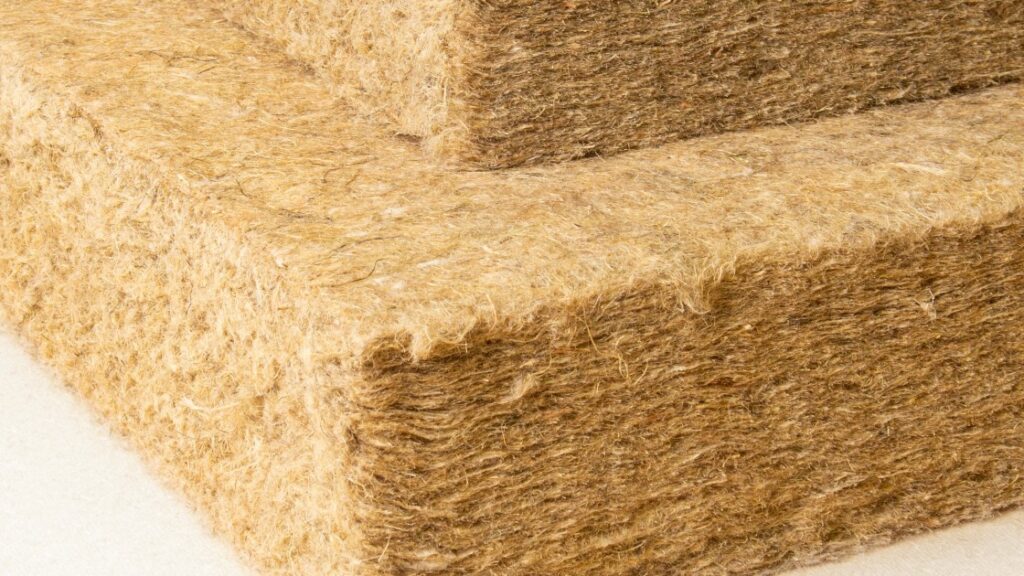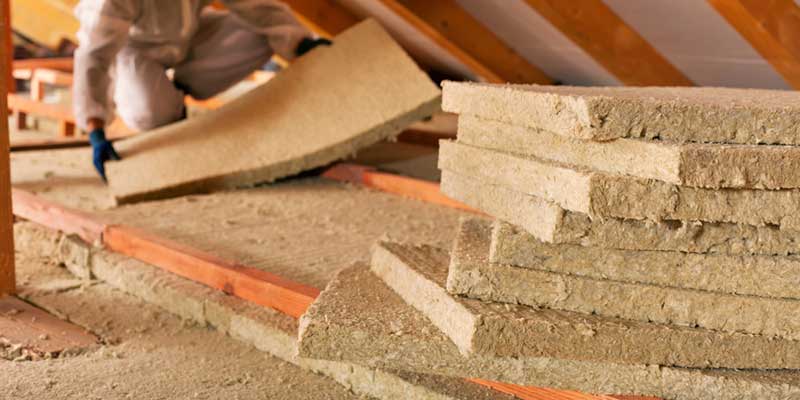Imagine a world where the walls of your home not only keep you warm but also fight climate change, improve your health, and support a thriving agricultural economy. This isn’t a far-off fantasy—it’s the promise of hemp insulation, a material poised to redefine how we build. Dubbed the Hemp Insulation Game Changer, this plant-based solution could transform the construction industry, slashing carbon emissions and offering a greener alternative to traditional insulation like fiberglass and foam. Yet, despite its potential, hemp insulation remains on the sidelines in many places, waiting for the policy support it desperately needs to scale up and shine. Let’s dive into why this Game Changer Hemp could be the future of sustainable building—and what’s holding it back.
The Magic of Hemp: Nature’s Insulating Powerhouse
Hemp insulation comes from the fibrous stalks of the industrial hemp plant, a cousin of cannabis that contains negligible THC (the psychoactive compound in marijuana). Legalized in the U.S. in 2018 under the Farm Bill, hemp grows lightning-fast—up to 13 feet in just 100 days—requiring minimal water, no pesticides, and enriching the soil as it thrives. The insulation itself, often sold as batts or rolls, is typically 90% hemp fiber, blended with a small percentage of polyester or other binders to hold it together. The result? A dense, wool-like material that rivals conventional options in performance while leaving a feather-light environmental footprint.
Take its thermal properties: hemp insulation boasts an R-value (a measure of heat resistance) of about 3.5 per inch, comparable to fiberglass’s 2.9 to 3.8. In a standard 3.5-inch wall cavity, hemp can achieve an R-value of 13, and when compressed to 5.5 inches, it can hit 19.25—enough to meet the demands of even the chilliest climates. But it’s not just about keeping heat in or out. Hemp’s hygroscopic nature means it absorbs and releases moisture without losing its insulating power, acting like a natural humidity regulator. This breathability reduces mold risk and improves indoor air quality—something fiberglass, with its chemical binders and itchy fibers, can’t claim.
A Carbon-Negative Champion
Here’s where hemp insulation truly earns its Hemp Insulation Game Changer title: its carbon footprint—or lack thereof. Hemp is a carbon sink, sequestering roughly 5 metric tons of CO2 per acre as it grows. When processed into insulation, it locks that carbon into buildings for decades. Compare that to fiberglass, which relies on energy-intensive manufacturing and releases greenhouse gases during production, or spray foam, a petroleum-based product with a hefty embodied carbon cost. Studies estimate hemp insulation can cut insulation-related emissions by up to 90% compared to these mainstream materials. For context, buildings account for 20% of global greenhouse gas emissions, and insulation is a significant slice of that pie. Swapping out traditional options for hemp could be a game-changer in the fight against climate change.
The production process seals the deal. Making hemp insulation uses 14 times less energy than producing polyurethane foam with similar thermal performance. At the end of its life, hemp insulation doesn’t clog landfills—it’s biodegradable and compostable, returning to the earth without a trace. This closed-loop lifecycle makes it a poster child for the circular economy, a stark contrast to the “take, make, waste” model of synthetic insulation.
Why It’s Not Everywhere Yet
If hemp insulation is such a Game Changer Hemp, why isn’t it lining the walls of every new home? The answer lies in a tangle of economics, infrastructure, and policy gaps. For starters, it’s pricier—costing $1.40 to $3.10 per square foot versus fiberglass’s $0.30 to $1.50. That premium reflects a supply chain still in its infancy. Since legalization in 2018, U.S. hemp production has surged—by 2023, the country harvested over 50,000 acres—but processing capacity lags. Most insulation-grade hemp fiber is still imported from Canada or Europe, driving up costs. Companies like Hempitecture, an Idaho-based pioneer, are building domestic facilities, but scaling up takes time and capital.
Demand is another hurdle. While Europe has embraced hemp insulation (France alone has used it in thousands of buildings since the 1980s), the U.S. market is nascent. Builders stick to what they know—fiberglass and foam dominate because they’re cheap, widely available, and codified in building standards. Hemp insulation, despite its promise, lacks the ASTM certifications needed for widespread code approval, a process that’s slow and costly. Without a critical mass of adopters, manufacturers can’t achieve the economies of scale to lower prices, creating a classic chicken-and-egg problem.
Policy: The Missing Spark
This is where policy support becomes the linchpin. A recent study from Georgia Tech, published in the Journal of Cleaner Production in 2025, underscores the point: hemp insulation has a “viable business case,” but its success hinges on strategic incentives. Tax credits, subsidies for hemp farmers, or grants for processing facilities could jumpstart domestic production. Building codes could be updated to fast-track hemp’s inclusion, as could mandates for low-carbon materials in public projects—imagine every new school or government office insulated with hemp. The U.S. Department of Energy is already on board, funding research at Oak Ridge National Laboratory to test hemp insulation’s energy-saving potential, but broader legislative muscle is needed.
Look at Canada, the world’s top hemp seed and oil producer, where hemp insulation is still underutilized. A 2023 study in Sustainability found that integrating hemp into residential buildings could cut emissions significantly by 2050, but only with an “integrated supply chain” from farm to home. Policy there, too, lags behind potential. In contrast, the UK has flirted with hemp-friendly policies, like the Scottish government’s exploration of easing cultivation barriers, hinting at what’s possible with political will.

Beyond Insulation: A Broader Vision
Hemp insulation isn’t just about walls—it’s a gateway to a hemp-based building revolution. Hempcrete, a mix of hemp hurds and lime, is already used for walls and floors, offering similar eco-benefits. Pair it with hemp insulation, and you’ve got a home that’s nearly carbon-negative from the ground up. The modular housing sector, projected to hit $118.3 billion globally by 2027, is eyeing hemp for its speed and sustainability—prefab homes insulated with hemp could slash construction emissions while meeting housing shortages. Even rural economies win: hemp farming creates jobs and diversifies income for farmers, as seen in Idaho, where Hempitecture’s new facility is boosting local agriculture.
The Road Ahead
Hemp insulation could be a Hemp Insulation Game Changer, but it’s not a silver bullet—yet. Its fire retardancy, currently rated Class C, needs improvement to reach the coveted Class A standard, a challenge companies are tackling with research into non-toxic treatments. Public awareness must grow, too—homeowners and builders need to see hemp as more than a niche “green” gimmick. Still, the numbers don’t lie: a $11 billion insulation market in the U.S. alone, growing at 3% annually, is ripe for disruption. If policy makers step up, hemp could claim a chunk of that pie, turning a sustainable dream into a mainstream reality.
Picture this: a future where every home is a carbon sink, where construction heals the planet instead of harming it. Hemp insulation has the chops to get us there. All it needs is the green light from policy to ignite its Game Changer Hemp potential. The clock’s ticking—will we seize this chance to build smarter, greener, and better?
Discover the future of sustainable building with NanoHempTechLabs’ hemp insulation—a Hemp Insulation Game Changer! Sourced from fast-growing, carbon-sequestering hemp, our insulation delivers R-values up to 19.25, exceptional moisture regulation, and a 90% lower carbon footprint than fiberglass. Biodegradable and energy-efficient, it’s the eco-friendly choice for wholesalers looking to lead the green construction revolution. As policy support grows, now’s the time to stock this Game Changer Hemp product and meet rising demand. Partner with NanoHempTechLabs to offer builders and homeowners a superior, planet-friendly solution. Schedule a call today to explore wholesale opportunities and pricing!
Reference:
- Avudaiappan, S., Moreno, P., Montoya, L., Chávez-Delgado, M., Arunachalam, K., Guindos, P., … & Arrey, J. (2023). Experimental investigation on the physical, microstructural, and mechanical properties of hemp limecrete. Scientific Reports, 13(1). https://doi.org/10.1038/s41598-023-48144-y
- Capua, S., Paolotti, L., Moretti, E., Rocchi, L., & Boggia, A. (2021). Evaluation of the environmental sustainability of hemp as a building material, through life cycle assessment. Environmental and Climate Technologies, 25(1), 1215-1228. https://doi.org/10.2478/rtuect-2021-0092
- Costantine, G., Maalouf, C., Moussa, T., & Polidori, G. (2018). Experimental and numerical investigations of thermal performance of a hemp lime external building insulation. Building and Environment, 131, 140-153. https://doi.org/10.1016/j.buildenv.2017.12.037





